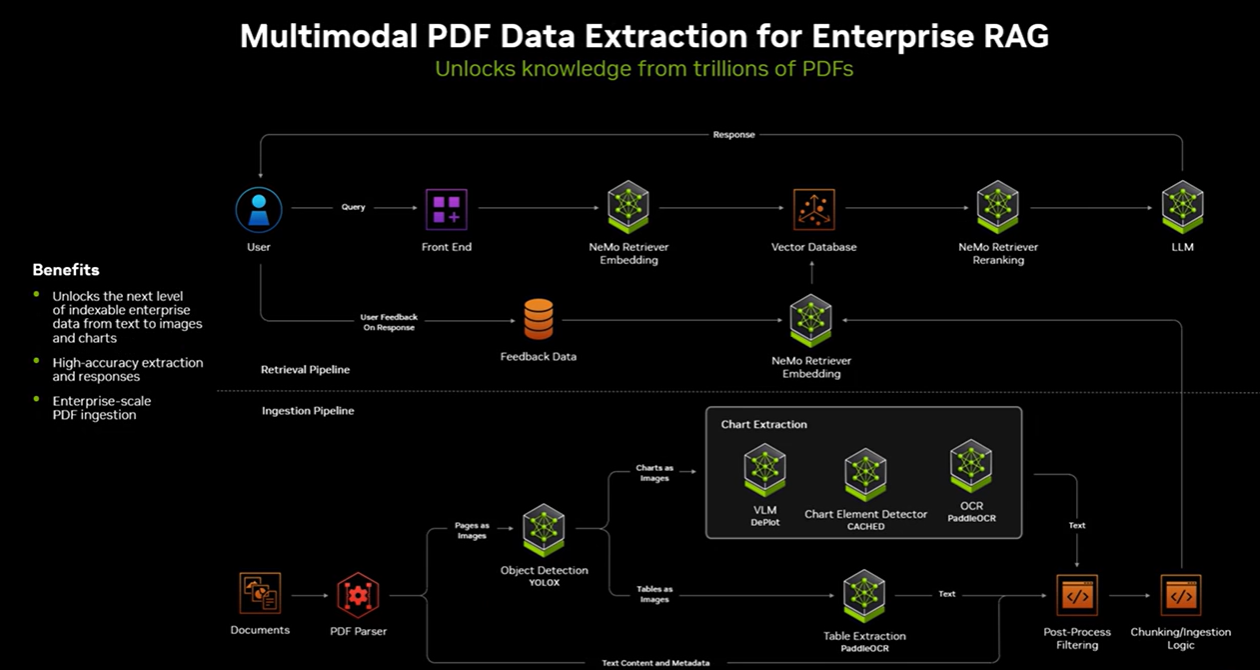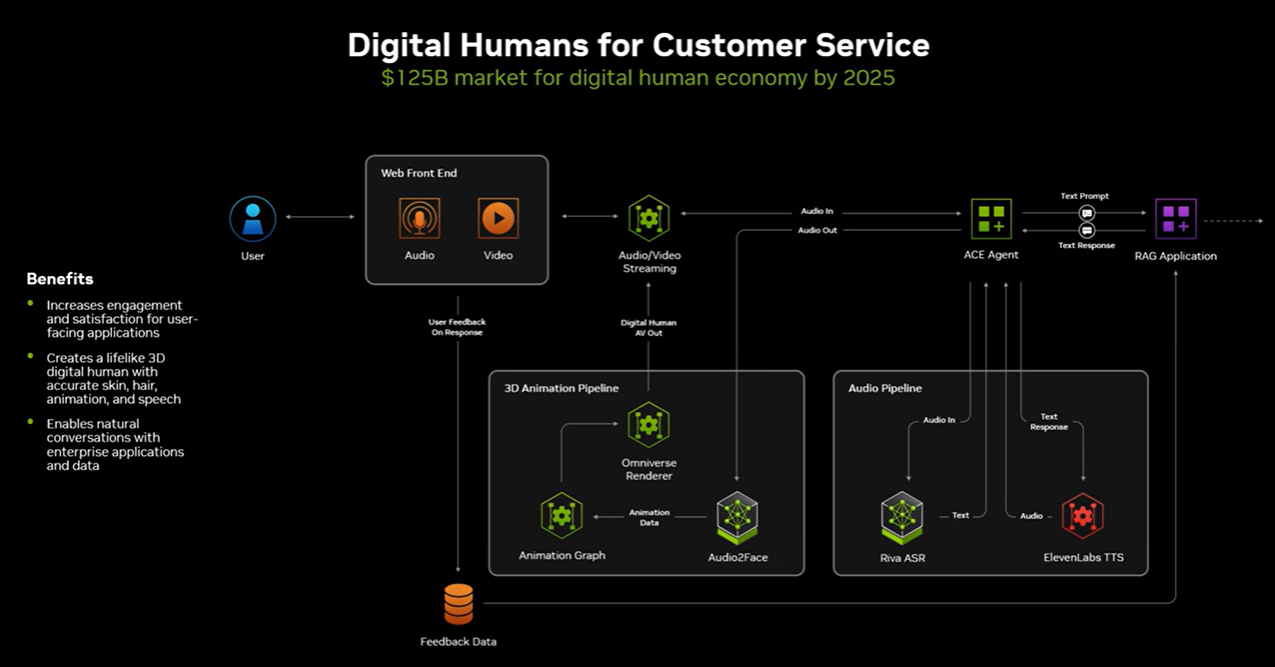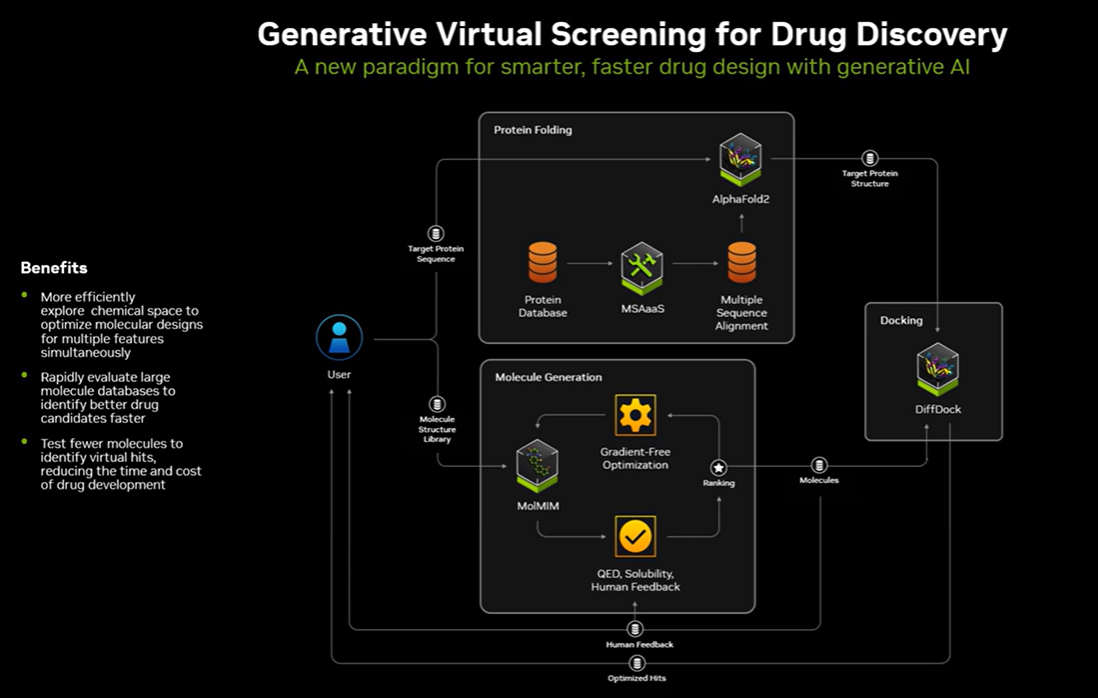Nvidia launched NIM Agent Blueprints, which are reference AI workflows aimed at bringing generative AI to specific use cases.
With the move Nvidia is looking to bring more generative AI prototypes to production and drive business value. Enterprises have plenty of use cases, but often data issues get in the way. With NIM Agent Blueprints, Nvidia is giving enterprise developers more turnkey options.
At GTC, Nvidia launched NIM, a set of microservices that make models accessible to enterprises. Nvidia NIM Agent Blueprints come with microservices, sample applications, reference code, documentation and deployment help.
Nvidia highlights algorithmic research as it moves to FP4
According to Nvidia, NIM Agent Blueprints are a jump start and designed to be modified and enhanced with what the company calls a "data-driven generative AI flywheel." NIM Agent Blueprints are free to download for developers and can be deployed via Nvidia AI Enterprise.
"You can think of NIM Agent Blueprints as an ever-growing catalog of reference applications that are built from common use cases, and we're encoding the best practices from Nvidia's experience with these leading companies that are early adopters," said Nvidia's Justin Boitano, vice president of enterprise AI software products, in a briefing. Boitano added:
"The first wave of generative AI was really the infusion of AI into internet scale services driven by makers of foundation models and expanded into productivity tools. The next wave is really starting now, and it represents a bigger business process transformation that's going to affect how teams work across an enterprise. AI is going to help teams reason through complex business decisions."
- Why aren't genAI projects scaling? Data issues, says Deloitte
- 14 takeaways from genAI initiatives midway through 2024
- Enterprises start to harvest AI-driven exponential efficiency efforts
- Secrets to a Successful AI Strategy
Boitano cited Amdocs, AT&T, L'Oreal and Siemens as companies going down the generative AI business transformation path.

The first NIM Agent Blueprints are available in three use cases: digital human for customer service, generative virtual screening for accelerated drug discovery and multimodal PDF extraction for enterprise retrieval-augmented generation (RAG).
Nvidia said it plans to launch new NIM Agent Blueprints each month with a pipeline that will include customer service, content generation, software engineering, retail shopping advisors and research and development.

To bolster the effort, Nvidia plans to leverage systems integrators and partners to develop their own NIM Agent Blueprints and use cases. Accenture, Cisco, Dell Technologies, Deloitte, Hewlett Packard Enterprise, Lenovo, SoftServe, and World Wide Technology are among the first partners to launch NIM Agent Blueprints.
Boitano said that Nvidia will launch NIM Agent Blueprints for both vertical and horizontal use cases with help from a broad ecosystems of consulting firms.

Constellation Research's take
Here's what Constellation Research analysts had to say about the NIM Agent Blueprint effort.
Holger Mueller said:
"Nvidia's NIM Agent Blueprints offering should enable enterprises to uptake AI faster to power their next generation applications. As expected the AI game is becoming a little more about the software (than the hardware)."
Martin Schneider said:
"The NIM Agent Blueprints remind me of the early days when Azure and AWS were going all out trying to help people move their applications to their clouds. It's the “if you build it, they will come” concept, except people weren’t coming as quickly as they expected, so they needed to make it easier and more financially compelling. I think Nvidia is understanding that we’re hitting a gap in terms of the low hanging fruit of genAI use cases and anticipating the lull and doing its best to minimize it."
Andy Thurai said:
"Now that Nvidia has saturated the large language model and genAI market, it is looking for ways to further fuel growth and sustain innovation. GenAI is hitting the adoption chasm and enterprises aren't moving to production at nearly the same pace they've been experimenting with it. If genAI production slows it could hit Nvidia hard. Nvidia is staying ahead of the curve with NIM Agent Blueprints."
- Nvidia outlines roadmap including Rubin GPU platform, new Arm-based CPU Vera
- Nvidia's 10Q filing sets off customer guessing game
- Nvidia acquires Run.ai for GPU workload orchestration
- Nvidia Huang lays out big picture: Blackwell GPU platform, NVLink Switch Chip, software, genAI, simulation, ecosystem
- Nvidia today all about bigger GPUs; tomorrow it's software, NIM, AI Enterprise


